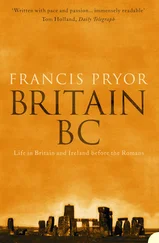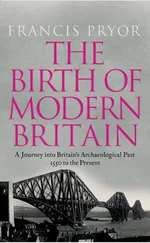Another debate was about the development in the 1980s of the 'out-of-town' shopping centre. These huge supermarkets built on the edge of the town so that people could drive to them and collect all their shopping in one visit were and are very convenient. But their existence meant that something was destroyed in the middle of town where people traditionally walk up and down, enjoy meeting friends, visit the library, the park, the cinema, the cafe, the pub, and take pleasure in the variety and beauty of the local architecture. The centres of small towns used to have lots of little shops selling different things, with individual shop-keepers to serve their customers and know their stock. Many of those shops closed because of competition from the supermarkets. So people no longer came to shop in old streets around the centre, and then the other shops which provided goods not to be found in the supermarkets, also suffered. Some town centres seemed to die. Even the enthusiastic shoppers at supermarkets began to regret the consequences. Now it is much more difficult to get planning permission to build out-of-centre supermarkets, but the inhabitants of some towns believe it is too late to save their town centres as places of lively activity. On the other hand, as supporters of big supermarkets point out, ultimately this is a matter of the people's choice. If shoppers had continued to use small shops they would have saved their town centres. Instead they chose to shop at the cheapest places.
A post-industrial age
In the nineteenth century Britain was famous as the first industrial power. Its factories and mills covered great areas of central and northern England, central Scotland and southern Wales. We had a dense network of roads, canals and railways. We produced vast quantities of coal and iron, and built the heavy engineering works which could develop because of our supply of these basic materials. Our ship yards turned out huge metal ships; at the other end of the scale, individual cities were devoted to creating the finest quality steel for domestic and military purposes. In Yorkshire we had huge woollen mills; in Lancashire huge cotton mills; and in Staffordshire in the area called 'the Potteries' we turned out the simplest earthenware plates and the finest china to satisfy the needs of an Empire.
Almost all of that world of industrial activity has disappeared along with our Empire. As world trade became more globalised it was obvious that people in poorer parts of the world could and would work for lower wages to produce these essentials. Britain, with its increasing population and changing expectations of what a decent life meant could no longer compete. Since the end of the Second World War we have been steadily losing our heavy industry. So - except in rare places -you will no longer see the pithead wheels of the coal mines, the tall chimneys of industrial factories, the warehouses, the huge single-industry communities which Russians call 'settlements'.
Instead we have turned to high-quality technological industries requiring specialised and highly trained labour; for example, in the pharmaceuticals industry, in food processing, and in specialised engineering (including arms). Our car factories have been sold to foreign firms although British workers still make the cars. Much of our ingenuity has gone into small inventions requiring skilled workmen not so many material resources. Computers have taken over from manual labour; buildings are no longer vast but are often inconspicuous two-storey 'workshops'.
The great and grand northern industrial cities suffered badly when our heavy industry declined rapidly and disappeared in the 1970s and 1980s. These cities - Liverpool, Manchester, Sheffield, for example - suddenly became places where tens of thousands were unemployed and where poverty returned to the streets. (Several fine British films explored the predicament of northerners in the 1980s.) During the last fifteen years much money has been directed by the government into 'regenerating' them, especially by developing new specialist industries and big, colourful cultural centres. Not all the schemes have been successful, but multiple efforts to clean these cities fundamentally - cleaning the slums, the streets, the rivers, the canals, the parks, the wasteland, the ruins of industrial collapse - has stimulated much more enthusiasm and employment within them.
What I have described here will be difficult for Russians who have not travelled to other countries to visualise. Your cities look very much the same as each other from the furthest west to the furthest east. This is partly a matter of climate and materials, partly the fact that many cities are almost wholly new constructions, and partly Soviet policy.
In British urban areas we can of course see many similar features in our towns, especially when they are close to one another and use the same local materials; but we can also see great diversity of structures, styles, materials and layout. As we walk about our streets it is possible to trace the old streets of six or eight hundred years ago which lie beneath them. We are walking on the bones of our country.
Chapter 3. Houses and Homes: How We Build Them, Buy Them and Care For Them
Types of houses
From towns and cities let us turn to the houses of Britain. The most important point is to understand that most of us do not live in flats. Every country has its typical housing so that if you cross from England into France or Germany or Spain, you will know instantly that you are in another country. The differences are partly architectural, partly aspects of the way people choose to domesticate their immediate surroundings. But there are also similarities. If you travel from Russia across Europe to western France you will observe that almost all cities have a centre with old buildings of three or four even five storeys, but that these centres are surrounded by modem blocks of high-rise flats. The details will vary, but all countries have found that the obvious solution to cheap new housing in order to accommodate families moving from the countryside or needing improved conditions is to build blocks of flats. They are rarely beautiful or spacious, but they are convenient and efficient. The problems are similar: noise, cramped public areas, unpredictable water supplies, broken lifts... but they are homes for millions of people who prefer them to the more primitive conditions they have left.
In England, however, our cities are not encircled by these high-rise buildings. We resist living in flats; we prefer to live in rows of small brick houses. Of course some English people enjoy living in flats, but for the vast majority of us, the basic idea of home is a brick house with rooms upstairs and downstairs and with a garden, even if it is a very small garden. If you fly into London from Russia and the weather is clear, you will see the difference immediately. Below you will be all those small roads I have described, each road consisting of neat rows of houses. You will be able to see the individual houses quite clearly, and also the gardens. These houses stretch out from the centre of the cities to the edge where it meets the countryside.
At first sight our preference for little houses makes no sense. If England is one of the most densely populated countries in Europe, why don't we seize on the obvious solution and build upwards? Even in Scotland people often live in flats although there is far more land per person available. Why is England different not just from Russia but from most of continental Europe? The answer is in our history.
The brick house is a legacy of the English - the earliest -Industrial Revolution. Employers at the beginning of the nineteenth century had to build accommodation for the millions of workers pouring into the cities and at that time they did not have the materials or technology for cheap building upwards. For them the cheapest solution was to build rows of small houses joined together (terraces), each with two small rooms downstairs and two small rooms upstairs. The rooms were small because they were heated by open fires, not by stoves, and families tended to huddle in one room (the kitchen). Bedrooms were unheated, and to this day many English people find it impossible to sleep except in a cold room with the windows wide open.
Читать дальше












